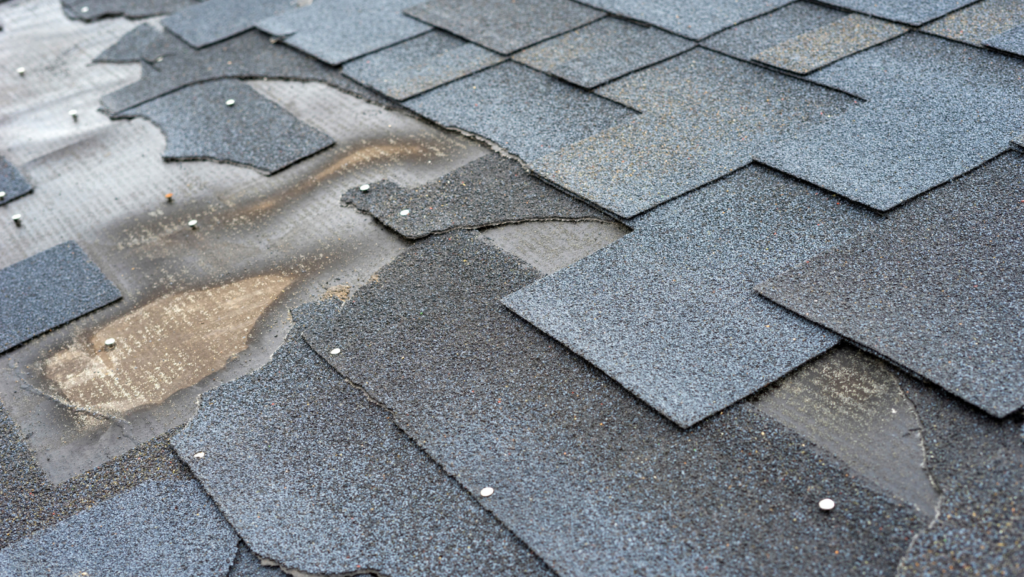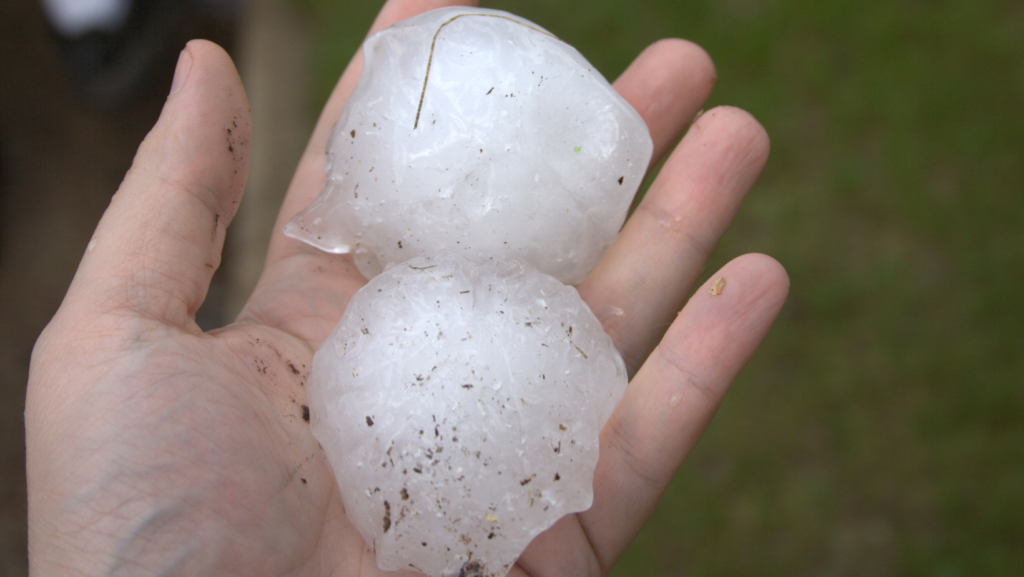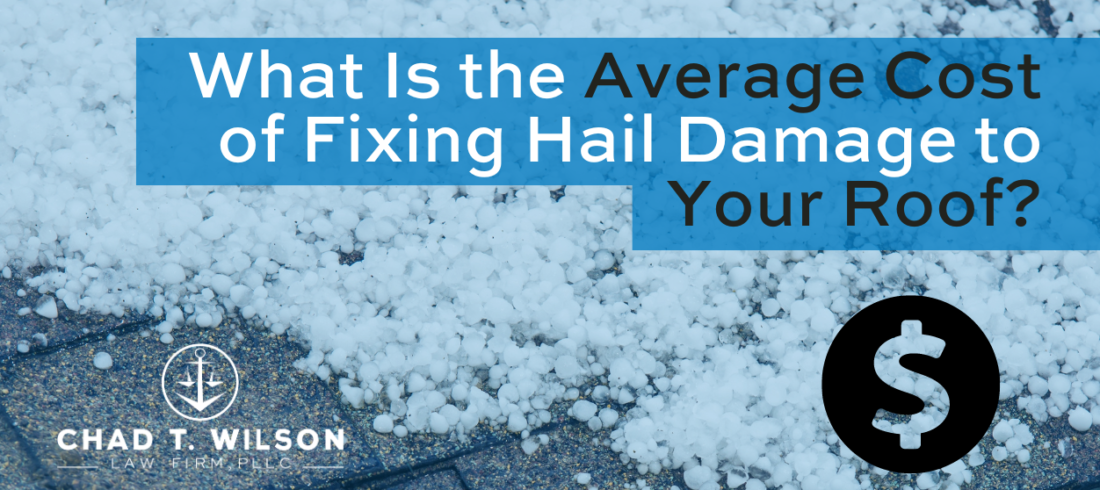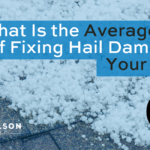
What is Hail Damage?
Hail damage is defined as any harm brought on by hailstones and hailstorms. Hailstones that are 0.75 inches or bigger can seriously damage homes, buildings, cars, and other types of property.
The most frequent type of hail damage is dents in vehicles and home roof damage. Additionally, hail can harm or chip the properties of paint when it scrapes against body surfaces. Glass, mirrors, or lighting may also break during a severe hailstorm.

How does hail form?
When raindrops are transported aloft by thunderstorm updrafts into extremely cold regions of the sky and freeze, hailstones are created, and when liquid water drops strike a hailstone’s surface and freeze, the hailstone grows. When water and hailstones collide, if the water freezes instantly, air bubbles will become trapped in the freshly formed ice, resulting in unclear ice. The air bubbles can escape, and the resultant ice will be clear if the water freezes slowly. The hailstones fall when the thunderstorm’s updraft is unable to hold its weight, which can happen if the stone grows too big or the updraft becomes too feeble.
If the hailstone experiences various temperature and liquid water content circumstances in the thunderstorm, it may develop layers of transparent and cloudy ice. The hailstone’s circumstances can alter as it travels horizontally through or close to an updraft. However, the layers are not just the result of the hailstone experiencing ups and downs during a thunderstorm. The winds inside a thunderstorm aren’t just up and down; they also have horizontal components that can come from either a spinning updraft, as in supercell thunderstorms, or from the horizontal winds in the surrounding area. Additionally, when hailstones are lofted to the top of the thunderstorm, they do not increase. Since hailstones require liquid water to grow to a size that is noticeable, really high altitudes contain air that is so cold (below -40°F) that all liquid water has frozen into ice.
What happens when hail hits the ground, and how can you identify if it’s considered property damage when it does?
Hail begins to descend when its weight surpasses that of the thunderstorm updraft and is drawn downward by gravity. Larger hail often falls closer to the updraft than smaller hail because it might be driven away from the horizontal winds.
When hail falls at an angle or even almost sideways, the winds close to the surface are strong enough to cause severe damage. Wind-driven hail can destroy siding on houses, smash windows and blow inside, shatter side windows on cars, injure or kill humans and animals severely, and even cause major damage to buildings.
Call Chad T. Wilsom Law Firm, PLLC.
Speak with a property damage attorney if you’re having trouble getting your claim processed or if the insurance company is attempting to pay less for the claim than is reasonable.
Learn more about our attorneys:
https://cwilsonlaw.com/meet-the-team-chad-t-wilson-law-firm-pllc-insurance-attorney/
Follow us on Social media:
https://beacons.ai/chadtwilsonlaw
Contact our Chad T. Wilson Law Firm Office Locations to Schedule a free Consultation.
Chad T. Wilson is an attorney whose firm specializes in property insurance disputes.
« Back to Glossary Index





